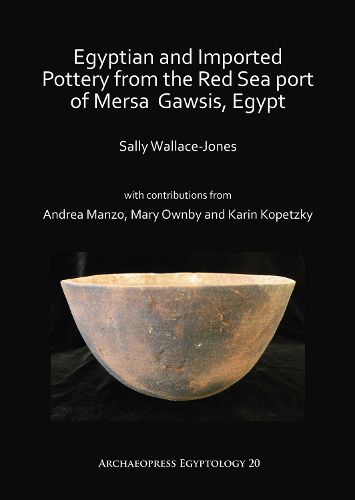Readings Newsletter
Become a Readings Member to make your shopping experience even easier.
Sign in or sign up for free!
You’re not far away from qualifying for FREE standard shipping within Australia
You’ve qualified for FREE standard shipping within Australia
The cart is loading…






The unique site of Mersa Gawasis was a base for seaborne trade along the Red Sea coast during the Middle Kingdom. The Egyptians’ purpose was to trade with Punt for incense and other exotic materials. There is little evidence of any permanent structures at the site apart from man-made caves in which shipping equipment was stored between expeditions. The pottery is, therefore, amongst the most significant evidence for human activity here. Vessel types include many marl C jars, but other kinds of vessels including significant foreign material also occur, some in large quantities. This variety of vessels and the careful reuse of potsherds is central to an understanding of specific and day to day domestic activities and of how the site operated. Mersa Gawasis has many vessel forms of the 12th and Early 13th dynasties. Epigraphic evidence closely dates the site, helping to confirm and underpin an understanding of vessel types and technologies within the ceramic chronology of the period. This volume presents the site’s wide variety of ceramic material, offering also an interpretation of what pottery reveals about activities at the site. The author and excavation photographer have worked together to enhance details of the text with specific photographs.
$9.00 standard shipping within Australia
FREE standard shipping within Australia for orders over $100.00
Express & International shipping calculated at checkout
The unique site of Mersa Gawasis was a base for seaborne trade along the Red Sea coast during the Middle Kingdom. The Egyptians’ purpose was to trade with Punt for incense and other exotic materials. There is little evidence of any permanent structures at the site apart from man-made caves in which shipping equipment was stored between expeditions. The pottery is, therefore, amongst the most significant evidence for human activity here. Vessel types include many marl C jars, but other kinds of vessels including significant foreign material also occur, some in large quantities. This variety of vessels and the careful reuse of potsherds is central to an understanding of specific and day to day domestic activities and of how the site operated. Mersa Gawasis has many vessel forms of the 12th and Early 13th dynasties. Epigraphic evidence closely dates the site, helping to confirm and underpin an understanding of vessel types and technologies within the ceramic chronology of the period. This volume presents the site’s wide variety of ceramic material, offering also an interpretation of what pottery reveals about activities at the site. The author and excavation photographer have worked together to enhance details of the text with specific photographs.